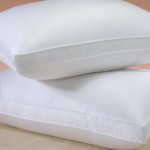Microwave Usage: A Big No-No
– Avoid using plastic wrap for food that is intended to be cooked in the microwave. Always remove the plastic wrap before placing the food in the microwave to heat it up.
– Leaving the plastic wrap on food items and then microwaving them can be dangerous. When the microwave heats up, chemicals like DEHA and Phthalates present in the plastic wrap can melt and leech into your food. Consuming such food can increase the risk of cancer and other serious illnesses.
– However, if the manufacturer’s instructions specifically state that the product is ‘microwave-safe’, then you may use the plastic wrap to cover your food before heating it in the microwave.

Choose the Right Plastic Wrap for Different Foods
– It is recommended to use plastic wrap made of PE (polyethylene) for storing pre-cooked or processed foods. For raw, uncooked foods, opt for PVC (polyvinyl chloride) plastic wrap. However, avoid using aluminum foil plastic wrap for acidic foods.
– To be absolutely sure, always read the manufacturer’s instructions carefully and use the plastic wrap accordingly for different types of foods.
Avoid Using Plastic Wrap with Greasy, High-Temperature Foods
– Hot foods with temperatures above 70°C, especially those that are greasy or oily, should not be covered with plastic wrap for storage.
– The chemicals from the plastic wrap can easily migrate into such foods, posing potential health risks to consumers.

Steer Clear of Plastic Wrap with Strange Odors
– If you notice any strange odors, colors, or signs of mold on your plastic wrap, it’s best to discard it immediately and purchase a new one. Such changes could indicate that the plastic wrap has degraded, producing toxins that are harmful to your health.
Maintain a Safe Distance between Food and Plastic Wrap
– When using plastic wrap to cover food, ensure that there is a minimum distance of 2.5 cm between the food and the wrap. This helps prevent any harmful chemicals from seeping into your food.

We hope that these tips will help you use plastic wrap safely and effectively. Feel free to share your own tips and experiences with us in the comments section below.
Stay tuned for more product usage guides at [website address].







































